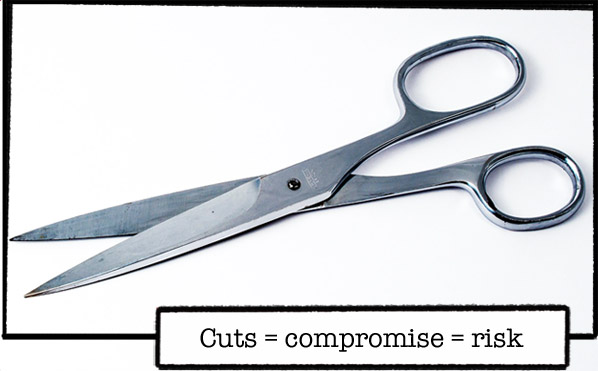In terms of hard data, your pupil numbers, curriculum model and financial bottom line provide you with more than a firm steer towards what your staffing structure should look like.
Whether you need to undertake a full restructure or simply make a few tweaks, your staffing structure is the nerve centre of your school and it requires almost constant attention.
The truth is, schools are always in the process of restructuring their staff – but by doing it with a long enough lead time, it becomes a change management process rather than a wholesale HR operation to be completed in a half term.
In the current climate of continuous change:
- How do you make sure that not only is your staffing structure value for money but also fit for purpose?
- How do you make sure that good on paper is good in practice?
Below is a three-phase self-evaluation tool designed to help you achieve just that.
Phase 1: Determination – Where do you need to be and what might stop you getting there?
It’s essential to determine your ‘destination’ before you set off on this journey or you are risking the wheels coming off along the way.
Curriculum led financial planning and benchmarking are key cornerstones of school budget management but other factors need to be taken into account before you start reshaping your staffing structure.
It’s easy to delete lines from spreadsheets and merge classes in SIMs but when it comes to dealing with people, assessing, evaluating and implementing the changes you need to make isn’t as straightforward.
Considering the current context, wider picture and long-term goals of your school is the starting point of any staffing review.
Ask yourself:
- Is our vision, mission and strategic plan reflective of what needs to be done and where we need to get to?
- Are there any external threats to our organisation that need mitigating?
- Could upcoming legislation changes impact our capacity or hinder progress towards our objectives?
- How can we ensure that accountability lines remain clear in the face of upcoming change?
- How can we protect the continuity of operation and facilitate knowledge sharing to mitigate the impact of turnover?
- What skills are we lacking that we’re going to need over the next year?
- What knowledge do governors need and what role should they have in relation to any changes that we need to make to our staffing structure?
Phase 2: Assessment – What do you already have, what else do you need and how can you fill the gaps?
Determining your destination will almost certainly have flagged a number of issues that need your attention.
Recruitment or redundancy is often seen as the obvious way forward but both options can prove costly and therefore should only be undertaken if all other angles have been explored. It’s at this stage where marrying together as much as possible the ambitions of your staff and the ambitions of the organisation can really bear fruit.
The more you know about your staff and where you need to be – and the sooner you know it – the better you will be able to implement the changes you need to make. It may even be the case that upon assessing your current position, you re-evaluate your final destination.
The future is not predetermined so go through as many draft versions as you need to.
Ask yourself:
- Do we have accurate and up to date information about our staff in terms of pay scales, job descriptions and skillsets?
- Are the jobs being done across the school being done by the right people?
- Are all the jobs being done needed to be done? Can they be done a better way?
- Do we have capacity and is it in the right place?
- Would a review of job descriptions, an investment in CPD and appropriate remuneration mitigate the need to recruit and secure best value from existing staff?
- How can appraisal inform our thinking in terms of skills and talent management?
- Could leadership roles be redefined across the school to reduce head count and cost but also foster talent management and create new progression pathways?
- What impact will these changes have on our support staff and operational capacity?
- Would a service level agreement or local collaboration be a preferable option?
- If we need to recruit, what terms and conditions will suit both the role and need of the organisation best?
Phase 3: Evaluation – What risks come with your proposed strategy and how are you going to communicate it?
When it comes to staffing, there’s always going to be a curve ball that you didn’t account for. A maternity leave, a resignation or a long-term illness.
This phase is about both testing and safeguarding your strategy in as many ways as you can. Determine if this is a process that can be managed over time or if it needs to be implemented quickly.
Ask yourself ‘what if’. Think of your Head of English, Business Manager, Deputy Head and your Union representatives and what they could say about your plan. Think about would worry them, what would make them anxious and what questions they might have. Now think about what answers you would give them.
Ask yourself:
- Will our proposal achieve for us what we need it to?
- Are the reasons we have decided to make changes to our staffing structure sound and objective?
- Are there any factors that are non-negotiable?
- What are the main risks with the changes we are proposing and is our risk management process robust enough?
- Have we truly exhausted other options and are we able to justify our decisions?
- What is the best way to communicate these changes?
- How can we include feedback from stakeholders in a meaningful way?
- How can we be sure to demonstrate fairness and transparency throughout change implementation?
Top Tips
- Beware the ripple effect– one seemingly small change can create a lot of problems. Don’t assume anything and always think at least two steps outside of the immediate ‘impact zone’ when it comes to adding, removing or changing any roles.
- Have a contingency– don’t hang your strategy on one person or one plan. Have an alphabetised file of back up plans. ‘Just in case’ never hurt anybody!
- Don’t be held hostage – if you do end up caught out, negotiate on your own terms. Don’t get panicked into a ‘knee jerk’ – and likely costly – response. Remember that hostage situations can be negotiated.
- Consider intelligence, not just evidence– do your homework. Don’t just rely on hard data. Triangulate your knowledge with numerous sources before committing to anything.
- You don’t need to be a mystic, just be aware– it’s not just about planning for the future; you can only plan so far after all and as we’ve said, the unexpected can and usually does happen. It’s how often you review your plan that enables you to be agile when you find yourself on shifting sands.
Like what you’ve read? Subscribe to this blog by clicking here.
P.S. Have you joined The Business of School Leadership Facebook Group yet? For practical support, advice, tips, tools & guidance about all things school leadership, join us in the community by clicking here.
Written for: Primary School Management Magazine (@primaryleaders)




